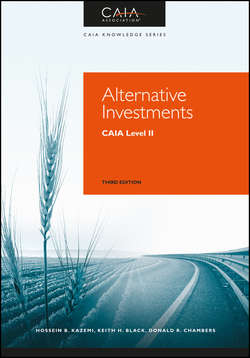Читать книгу Alternative Investments - Black Keith H. - Страница 71
На сайте Литреса книга снята с продажи.
Part 1
Asset Allocation and Institutional Investors
CHAPTER 3
The Endowment Model
3.4 Why Might Large Endowments Outperform?
3.4.1 An Aggressive Asset Allocation
ОглавлениеIn the world of traditional investments, a number of studies – including those by Ibbotson and Kaplan (2000); Brinson, Hood, and Beebower (1986); and Brinson, Singer, and Beebower (1991) – show that the strategic asset allocation of pension plans accounts for between 91.5 % and 93.6 % of the variance in fund returns. The remaining portion of the variance in fund returns, just 6.4 % to 8.5 %, can be explained by security selection and market timing. (Note that it was the variance in returns that was measured rather than the amount of returns.)
The returns from strategic asset allocation are measured by multiplying the targeted long-term asset allocation weights by the benchmark returns to each asset class. Security selection is defined as the return within asset classes relative to a benchmark, such as the return to the domestic fixed-income portfolio when compared to the domestic fixed-income benchmark. Market timing is measured as the return earned from the variation of asset class weights versus the policy or target asset class weights. Value is added from market timing, or tactical asset allocation, when the returns to overweighted asset classes outperform the returns to underweighted asset classes. For example, when the actual equity allocation is 42 % and the target equity allocation is 40 %, the return to market timing is positive when the equity index outperforms the returns of the other asset classes in the portfolio.
Swensen (2009) explains the role of tactical asset allocation and rebalancing. Investors are encouraged to be contrarian and consider valuation when making allocations. Rather than considering what his peers were doing, Swensen entered alternative asset classes earlier and more aggressively than did other institutional investors. In contrast to the common practice of increasing allocations to asset classes after a period of outperformance, Swensen sought to aggressively rebalance (i.e., transact so as to cause portfolio weights to return to prespecified values) to strategic asset allocation weights by selling outperforming asset classes and buying underperforming ones. This can be psychologically difficult, as it requires buying equities during a crash and selling certain assets when other investors are clamoring to increase their allocations to those assets. Market timing between risky and less risky asset classes, such as equities versus cash, can be dangerous due to the large difference in expected returns. While generally eschewing market timing, Swensen suggests tilting the portfolio toward undervalued assets and away from overvalued assets between asset classes with similar long-term return expectations, such as real estate and natural resources. Rebalancing can add significant value, so Swensen sought to aggressively rebalance in real time. In a volatile year, such as 2003, Yale's rebalancing activity added as much as 1.6 % to annual returns.
Brown, Garlappi, and Tiu (2010) analyze the returns to endowment funds over the period 1984 to 2005 and find a much different story than that seen in prior literature regarding return attribution in pension plans. This study shows that just 74.2 % of the returns can be explained by the endowment's strategic asset allocation. With market timing explaining 14.6 % of returns, and security selection explaining 8.4 %, endowment funds show a much larger contribution to returns from dynamic asset allocation and manager selection.
While it can be easy to replicate the asset allocation of endowment funds, investors seeking to emulate the success of the endowment model will find it much more difficult to profit from market timing and security selection. One reason may be that while pension plans are seen to focus largely on passive allocations within each asset class, endowment funds place a much greater emphasis on manager selection. Brown, Garlappi, and Tiu also find that the return from policy allocation is quite similar across endowments. The contribution from asset allocation explains just 15.3 % of the return differences across endowments, while selection explains 72.8 % and timing contributes just 2.5 %. The endowment model, then, does not seem to be an asset allocation story but rather a story of superior manager selection.
